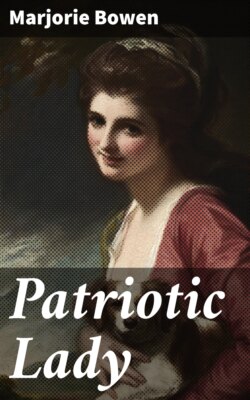Читать книгу Patriotic Lady - Bowen Marjorie - Страница 30
На сайте Литреса книга снята с продажи.
* * * * *
ОглавлениеTable of Contents
That was Emma's eighth letter and her last written to Charles Greville before she resigned herself to become the mistress of Sir William Hamilton. Her position in the society of Naples was quickly established, and she was soon acknowledged as one of the wonders of the city; Naples was always full of tourists and sightseers, and all of these must get to see the fascinating Emma. Even discreet English ladies, careful of their reputation, contrived to gloss the thing over, when they saw they could not be received at the British Embassy on any other terms.
Useful rumours of a secret marriage were spread abroad and the Duchess of Argyle, twice a British peeress and one of the famous Misses Gunning, gave Emma her countenance when she visited Naples. Lady Elcho, too, was kind to her, and though the salons of many of the Neapolitan aristocracy remained closed to her, her life was as free from every social annoyance as the life of one in her odd position possibly could be. Her "attitudes" became one of the attractions of the brilliant capital.
In March 1787, a handsome young German poet, Goethe, visited Naples, and noted in the inevitable journal that every traveller to Italy felt obliged to keep: "The knight, Hamilton, who is still living here as British Ambassador, after all his dabbling in art, after all his lengthy studies in nature, has found the pinnacle of that art that nature can afford. She lives in his house, an English girl of twenty years; she is very beautiful and well-modelled. He has had a Greek robe made for her, and it suits her excellently well. When she dons it she lets down her hair, takes up a couple of shawls, and so changes her attitude, her postures and her countenance, that a man at last comes to think he is dreaming. He looks on what so many thousand artists have thought to depict in the very flesh, moving before him through many poses. She stands, she sits, she lies down, she kneels before you, now she is serious, now she is sad, now she becomes most enticing, then she withdraws, allures, approves, then gradually becomes shy. She knows how to drape the folds of her shawl to suit each pose, and how to change them again accordingly, and she makes a hundred different kinds of headgear out of the same cloth. The old knight holds the light up to her, he gives himself over heart and soul to this."
Sir William soon possessed a whole gallery of paintings of his charmer, painted by Raphael Mengs, the fashionable Neapolitan painter, by Angelica Kauffmann, by the fashionable French painter, Madame le Brun, who painted her in her favourite attitude of a Bacchante, and found her very beautiful indeed. Her face was cut on cameos and carved in stone; in every possible way her features were immortalized and her singing was almost as much admired as her beauty, and her attitudes. Sir William also gave her lessons in deportment; he tried to finish the education Charles Greville had begun; he told her how to move, how to speak, and even a little how to spell. She picked up French and Italian very quickly, and in these languages her Flintshire accent was not apparent; her youth, her vivacity, her joy in herself covered up everything that might have offended in one less lovely, or less self-assured.
